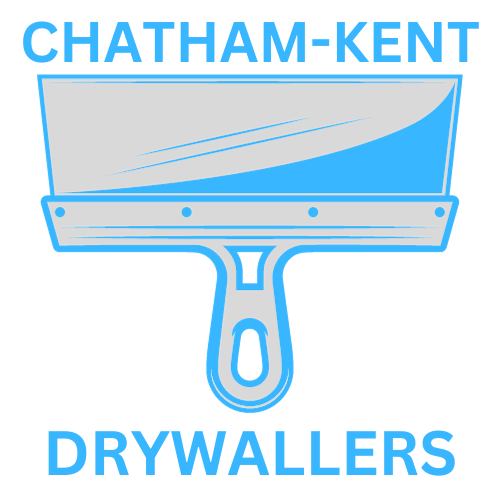Welcome To Our Blog!

Drywalling a ceiling is a key component in any home improvement project. It provides a smooth, uniform surface that can be painted or textured to match your interior decor. At Chatham-Kent Drywallers, we understand the importance of a properly installed ceiling and are here to guide you through the process. This article will walk you through the essential techniques and steps involved in drywalling a ceiling . Tools and Materials Needed Before you begin, gather the necessary tools and materials: Drywall sheets (usually 1/2 inch thick for ceilings) Drywall screws Drywall tape Joint compound (mud) Utility knife T-square Drywall lift (optional, but highly recommended) Screw gun or drill with a drywall bit Mud pan and taping knife Sanding block or pole sander Measuring tape Ladder or scaffolding Step-by-Step Process 1. Preparation Measure and Plan: Measure the dimensions of your ceiling to determine the number of drywall sheets required. Plan the layout, ensuring that the joints between sheets do not align with joints on the walls. This will add strength to the ceiling. Mark Joists: Use a stud finder to locate and mark the ceiling joists. This will guide you when attaching the drywall sheets. 2. Cutting the Drywall Measure and Mark: Measure the length and width of the first section of the ceiling. Use a T-square to mark the dimensions on the drywall sheet. Cut the Drywall: Score the drywall along the marked line using a utility knife. Snap the drywall along the score line and cut through the paper backing. 3. Installing the Drywall Position the Drywall: With the help of a drywall lift or an assistant, position the first sheet of drywall against the ceiling joists. Secure the Drywall: Drive drywall screws through the drywall into the joists, spacing them about 12 inches apart. Start from the center of the sheet and work your way outwards to avoid bulges. Repeat the Process: Continue measuring, cutting, positioning, and securing the drywall sheets until the entire ceiling is covered. 4. Taping and Mudding Apply Drywall Tape: Cover all joints between drywall sheets with drywall tape. Use mesh tape for added strength and ease of use. First Coat of Mud: Apply a thin coat of joint compound over the tape using a taping knife. Smooth it out to ensure it blends seamlessly with the drywall surface. Let it Dry: Allow the first coat to dry completely, which usually takes about 24 hours. Second Coat: Apply a second coat of joint compound, extending it a few inches beyond the first coat to feather out the edges. Smooth it out and let it dry. Final Coat: Apply a third, final coat of joint compound to achieve a smooth finish. Sand the dried compound using a sanding block or pole sander to remove any imperfections. 5. Finishing Touches Inspect and Touch Up: Inspect the ceiling for any missed spots or imperfections. Apply additional joint compound if necessary and sand again. Prime and Paint: Once the drywall is smooth and free of dust, apply a primer to the ceiling. Finish with a coat of paint or texture to match your desired look. Tips and Tricks Use a Drywall Lift: Renting a drywall lift can save you a lot of effort and make the installation process safer and more efficient. Stagger the Seams: Ensure that the seams between drywall sheets are staggered to increase the structural integrity of the ceiling. Lightweight Drywall: Consider using lightweight drywall for ceilings to make handling and installation easier. Safety First: Always wear safety glasses and a dust mask to protect yourself from dust and debris. Conclusion Drywalling a ceiling may seem daunting, but with careful planning and the right techniques, you can achieve professional-looking results. At Chatham-Kent Drywallers, we specialize in drywall installation and finishing. Whether you’re undertaking a DIY project or need expert assistance, our team is here to help. Contact us today for all your drywall needs and let us ensure your ceiling is finished to perfection.
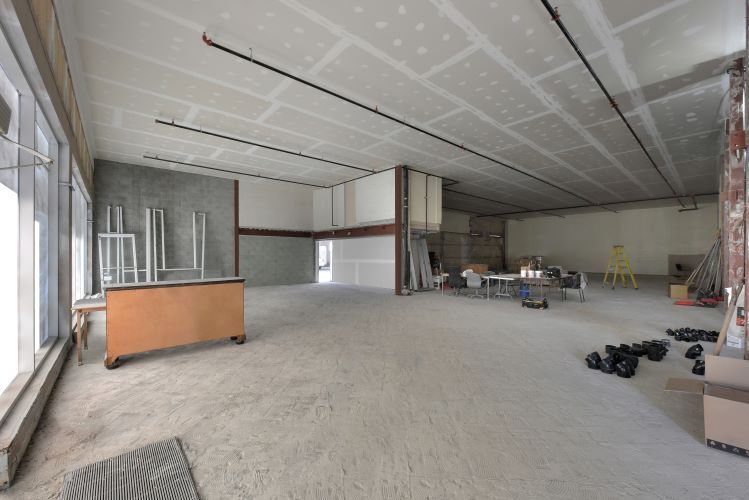
When it comes to constructing commercial buildings, choosing the right materials is essential for achieving durability, functionality, and aesthetic appeal. Drywall, also known as gypsum board or plasterboard, is a versatile building material widely used in commercial construction projects due to its affordability, ease of installation, and fire-resistant properties. In this article, we'll explore the different types of drywall commonly used in commercial buildings and their applications. 1. Regular Drywall: Regular drywall, also known as standard drywall or gypsum board, is the most common type of drywall used in commercial construction. It consists of gypsum plaster sandwiched between layers of paper, providing a smooth and uniform surface for painting or finishing. Regular drywall is suitable for interior walls and ceilings in commercial buildings where fire resistance and sound insulation are not primary concerns. 2. Fire-Resistant Drywall: Fire-resistant drywall, also known as Type X drywall, is specifically designed to provide enhanced fire protection in commercial buildings. It contains fiberglass or other additives that increase its resistance to fire, allowing it to withstand high temperatures for an extended period. Fire-resistant drywall is commonly used in areas where building codes require fire-rated materials, such as stairwells, corridors, and mechanical rooms. 3. Moisture-Resistant Drywall: Moisture-resistant drywall, also known as green board or blue board, is designed to withstand moisture and humidity better than regular drywall. It has a water-resistant gypsum core and a moisture-resistant paper facing, making it ideal for use in commercial buildings' bathrooms, kitchens, and other areas prone to moisture exposure. Moisture-resistant drywall helps prevent mold and mildew growth, ensuring a durable and long-lasting interior finish. 4. Soundproof Drywall: Soundproof drywall, also known as acoustic drywall or sound-dampening drywall, is engineered to reduce noise transmission between rooms and floors in commercial buildings. It features multiple layers of gypsum and sound-absorbing materials, such as viscoelastic polymers or mineral wool, that absorb and dissipate sound waves. Soundproof drywall is commonly used in offices, conference rooms, and other areas where privacy and noise control are essential. 5. Impact-Resistant Drywall: Impact-resistant drywall, also known as abuse-resistant drywall or high-impact drywall, is designed to withstand heavy impacts and physical abuse in high-traffic areas of commercial buildings. It features a reinforced core and a durable fiberglass or paper facing that resists dents, scratches, and other damage. Impact-resistant drywall is commonly used in schools, hospitals, and public facilities where walls are prone to damage from equipment, furniture, or foot traffic. In conclusion, the type of drywall used in commercial buildings depends on various factors such as fire resistance, moisture resistance, sound insulation, and impact resistance. By understanding the different types of drywall available and their applications, contractors can select the most suitable materials for their specific project requirements. As experienced professionals at Chatham-Kent Drywallers, we specialize in providing high-quality commercial drywall installation services tailored to meet our clients' needs. Contact us today to learn more about how we can help with your commercial construction project!

Drywall mudding , also known as taping and finishing, is a crucial step in the drywall installation process that transforms a raw wall into a smooth and seamless surface ready for painting or wallpapering. As experts in drywall finishing, Chatham-Kent Drywallers understands the importance of mastering the art of mudding to achieve flawless walls that elevate the aesthetics of any space. In this article, we'll delve into the purpose of mudding in drywall finishing and the techniques involved in achieving professional results. 1. Filling and Concealing Joints: One of the primary purposes of mudding is to fill and conceal the joints between drywall panels. When installing drywall, seams are inevitable, resulting in visible gaps between panels. Mudding involves applying joint compound, also known as mud, over these joints to create a smooth and seamless surface. This process effectively hides the joints, ensuring that the finished wall appears uniform and cohesive. 2. Smoothing Out Imperfections: In addition to concealing joints, mudding is also used to smooth out imperfections on the surface of the drywall. During the installation process, seams, screw indentations, and other irregularities may occur, detracting from the overall appearance of the wall. Mudding allows skilled drywall finishers to fill in these imperfections and create a level surface that is free of bumps, ridges, or depressions. 3. Reinforcing Seams and Corners: Mudding serves a functional purpose beyond aesthetics by reinforcing seams and corners to prevent cracking or separation over time. By applying multiple layers of joint compound and embedding drywall tape into the mud, drywall finishers create a strong bond that ensures the long-term integrity of the walls. This reinforcement helps to minimize the risk of future damage and prolongs the lifespan of the drywall installation. 4. Creating a Smooth Texture: The final purpose of mudding is to create a smooth texture on the surface of the drywall that is conducive to painting, wallpapering, or other finishing techniques. Skilled drywall finishers use specialized tools and techniques to achieve a seamless transition between the mudded areas and the rest of the wall. This smooth finish provides the perfect canvas for applying paint or other decorative treatments, resulting in a polished and professional look. In conclusion, drywall mudding plays a vital role in the finishing process, transforming raw drywall panels into smooth and seamless walls that enhance the beauty and functionality of any space. By filling and concealing joints, smoothing out imperfections, reinforcing seams and corners, and creating a smooth texture, mudding ensures that the finished walls meet the highest standards of quality and craftsmanship. With Chatham-Kent Drywallers' expertise in drywall finishing, you can trust that your walls will be impeccably mudded and ready to impress.

Drywall taping is a crucial step in the process of achieving smooth, seamless walls and ceilings in residential and commercial properties. As a trusted drywall company in Chatham, Ontario, Chatham-Kent Drywallers is dedicated to delivering exceptional drywall services, including expert drywall taping. In this article, we'll explore what drywall taping involves and why it's essential for achieving professional-quality results. What is Drywall Taping? Drywall taping, also known as mudding or plastering, is the process of concealing the joints and fastener indentations in drywall panels to create a smooth, uniform surface. It involves applying joint compound or mud over the joints, embedding drywall tape, and finishing the surface to achieve a seamless appearance. Drywall taping is essential for hiding the seams between drywall panels and creating a flawless finish for painting or wallpapering. The Drywall Taping Process: Preparation: Before beginning the taping process, ensure that the drywall panels are properly installed and secured to the framing. Inspect the seams and fastener indentations for any imperfections or damage that may need to be addressed before taping. Applying Joint Compound: Start by mixing the joint compound to the desired consistency, typically thick enough to hold its shape but thin enough to spread smoothly. Using a drywall knife or trowel, apply a thin layer of compound over the joints, covering them completely. Embedding Drywall Tape: Once the joint compound is applied, place drywall tape over the seams, pressing it firmly into the wet compound with a drywall knife or trowel. Be sure to smooth out any wrinkles or bubbles to ensure a tight bond between the tape and the compound. Second Coat of Compound: After the tape is embedded, apply a second coat of joint compound over the tape, extending it beyond the edges of the tape to feather the edges and create a smooth transition between the tape and the drywall surface. Feathering and Sanding: Once the second coat of compound has dried, use a drywall knife or sanding block to feather the edges of the compound, blending it seamlessly with the surrounding drywall surface. Sand the dried compound smooth, removing any bumps or ridges for a flawless finish. Final Coat and Sanding: Apply a final coat of joint compound over the taped seams, feathering the edges to achieve a smooth, uniform surface. Once the compound has dried, sand the entire surface lightly to remove any imperfections and create a smooth, even finish ready for painting or wallpapering. Conclusion: Drywall taping is a critical skill that requires precision, patience, and attention to detail to achieve professional-quality results. At Chatham-Kent Drywallers, we specialize in providing expert drywall taping services to ensure flawless walls and ceilings in your home or business. Contact us today to learn more about our drywall services and how we can help with your next project.
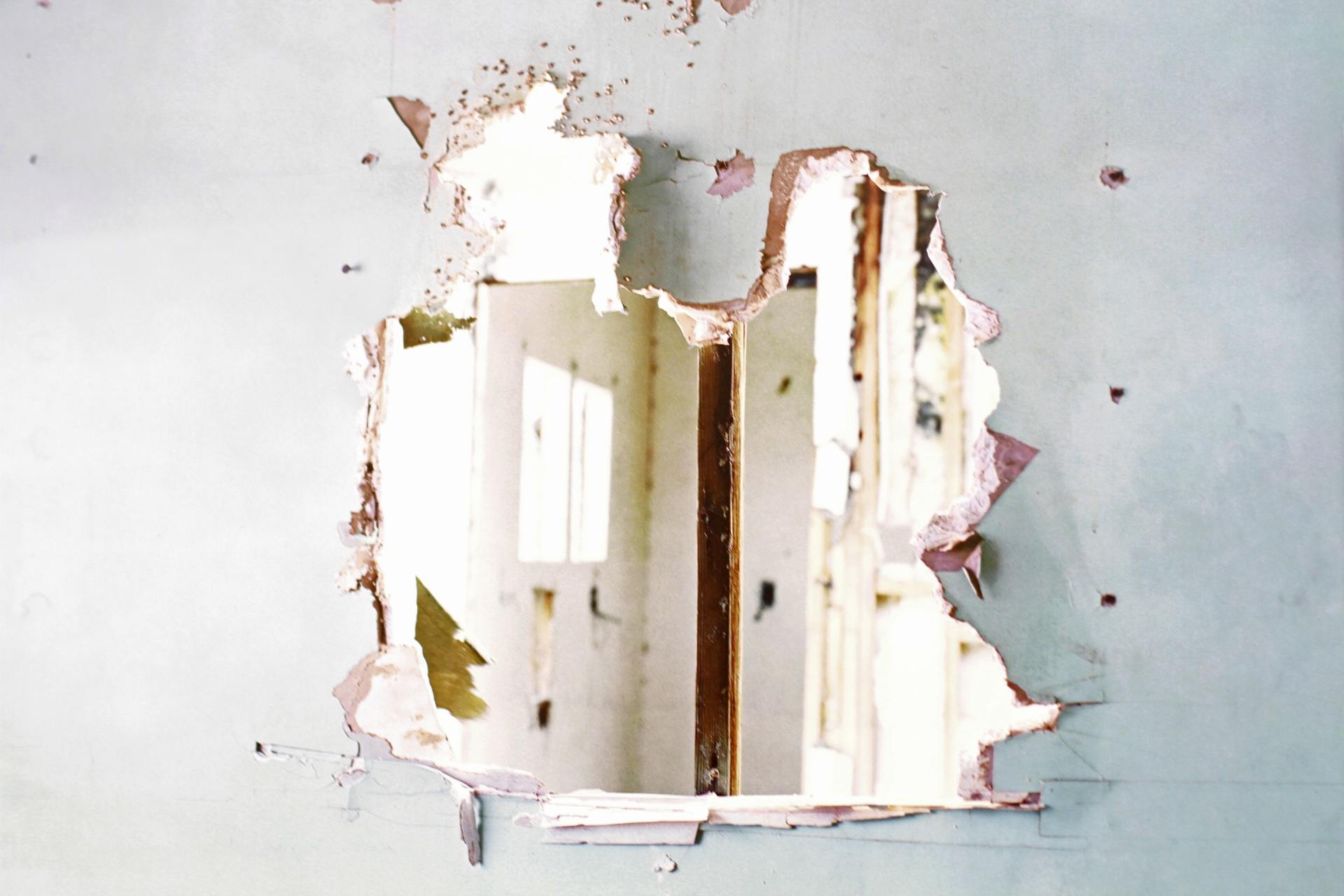
Drywall is a fundamental building material used in residential and commercial construction for its affordability, versatility, and ease of installation. However, like any building material, drywall is susceptible to damage over time due to various factors such as moisture, impact, and structural settling. In this article, we'll explore some of the most common types of drywall damage that homeowners and property owners may encounter, along with insights from Chatham-Kent Drywallers, your local drywall experts in Chatham, Ontario. 1. Cracks and Fractures: Cracks and fractures are among the most prevalent types of drywall damage and can occur due to several reasons, including structural settling, temperature fluctuations, or improper installation. These cracks may appear as hairline fissures or more significant fractures, compromising the integrity and aesthetics of the drywall surface. 2. Water Damage: Water damage is a severe threat to drywall and can result from leaks, floods, or moisture infiltration. When exposed to water, drywall becomes soft, swollen, and discolored, often leading to mold and mildew growth. Stains, bubbling, or warping of the drywall surface are common indicators of water damage, necessitating prompt repair or replacement to prevent further deterioration and mold infestation. 3. Mold and Mildew Growth: Moisture-prone environments, such as bathrooms, basements, or areas with poor ventilation, are susceptible to mold and mildew growth on drywall surfaces. Mold and mildew not only compromise indoor air quality but also pose health risks to occupants. Signs of mold and mildew include musty odors, discoloration, and visible patches of fungal growth, requiring immediate remediation to mitigate health hazards and prevent structural damage. 4. Nail and Screw Pops: Nail and screw pops occur when fasteners used to secure drywall panels to framing studs become loose over time, causing the drywall to protrude or bulge outward. This phenomenon may result from improper installation, structural shifting, or seasonal changes in humidity levels. Addressing nail and screw pops involves resecuring the affected drywall panels and concealing the protrusions with joint compound or spackling paste. 5. Impact Damage: Impact damage, such as dents, dings, and punctures, can occur due to accidental collisions, furniture movements, or other physical impacts. While minor impact damage may only mar the surface appearance of the drywall, severe impacts can cause structural compromise and necessitate repair or replacement of the affected area. 6. Joint and Seam Issues: Drywall joints and seams are vulnerable areas prone to cracking, separation, or tape failure over time. Poorly executed taping and mudding techniques, inadequate joint reinforcement, or structural movement can contribute to joint and seam issues. Repairing damaged joints and seams typically involves removing old tape, applying fresh joint compound, and re-taping to create a smooth, seamless finish. In conclusion, understanding the common types of drywall damage is essential for homeowners and property owners to identify and address issues promptly, preserving the structural integrity and aesthetics of their interior spaces. If you encounter any of these types of drywall damage in your Chatham, Ontario, property, don't hesitate to contact Chatham-Kent Drywallers for professional assessment, repair, and restoration services tailored to your needs. With our expertise and dedication to quality craftsmanship, we're here to ensure that your drywall remains in optimal condition for years to come.
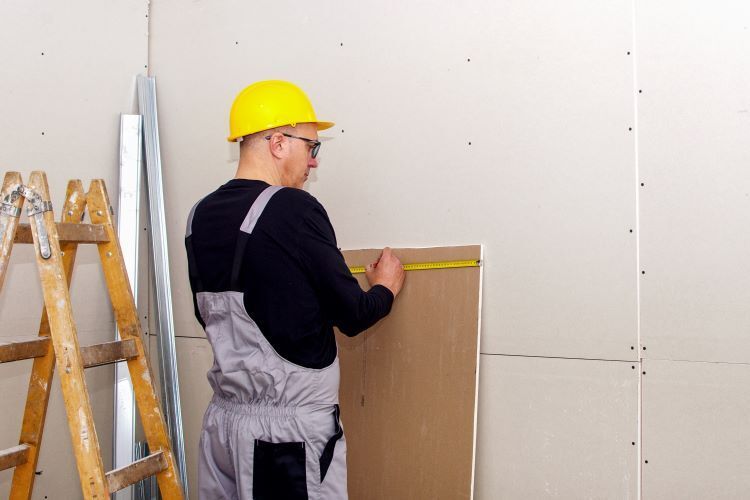
Drywall, also known as gypsum board or plasterboard, is a crucial building material used in construction for creating walls and ceilings. It provides a smooth, durable surface that can be easily painted or decorated. However, not all drywall is the same, and there are several types available, each with its own unique properties and applications. In this article, we'll explore the different types of drywall materials commonly used in construction projects. 1. Standard Drywall: Standard drywall, also known as regular drywall or gypsum board, is the most commonly used type of drywall. It consists of a gypsum core sandwiched between two layers of paper. Standard drywall is available in various thicknesses, typically ranging from 1/4 inch to 5/8 inch. It is suitable for most interior applications and provides a smooth, paintable surface for finishing. 2. Fire-Resistant Drywall: Fire-resistant drywall, also known as Type X drywall, is specially formulated to provide increased fire resistance. It contains additives such as glass fibers and other fire-retardant materials that enhance its ability to withstand fire. Fire-resistant drywall is commonly used in areas where fire safety is a concern, such as garages, utility rooms, and stairwells. 3. Moisture-Resistant Drywall: Moisture-resistant drywall, also known as green board or blue board, is designed to withstand high humidity and moisture levels. It is commonly used in areas such as bathrooms, kitchens, and laundry rooms where moisture is present. Moisture-resistant drywall features a water-resistant gypsum core and moisture-resistant paper facing that helps prevent mold and mildew growth. 4. Soundproof Drywall: Soundproof drywall, also known as acoustic drywall, is designed to reduce noise transmission between rooms and improve sound insulation within a building. It is typically manufactured with additional layers of gypsum and viscoelastic polymers that absorb and dampen sound vibrations. Soundproof drywall is commonly used in areas such as home theaters, recording studios, and bedrooms to create quieter and more comfortable spaces. 5. Impact-Resistant Drywall: Impact-resistant drywall is engineered to withstand physical impacts and is commonly used in high-traffic areas prone to damage. It features a reinforced fiberglass mesh embedded within the gypsum core, providing increased resistance to dents, scratches, and other forms of impact damage. Impact-resistant drywall is commonly used in schools, hospitals, and commercial buildings where durability is essential. 6. Mold-Resistant Drywall: Mold-resistant drywall is designed to resist mold and mildew growth, making it ideal for use in areas with high humidity and moisture. It features a special gypsum core and paper facing treated with mold inhibitors to prevent mold and mildew from proliferating. Mold-resistant drywall is commonly used in basements, bathrooms, and other damp areas where mold growth is a concern. In conclusion, there are several types of drywall materials available, each with its own unique characteristics and applications. Whether you need standard drywall for general interior construction or specialized drywall for fire resistance, moisture resistance, soundproofing, impact resistance, or mold resistance, Chatham-Kent Drywallers has the expertise and experience to meet your needs. Contact us today to learn more about our drywall services and discover how we can help bring your project to life.

Dealing with Drywall Cracks: Prevention and Repair Tips Drywall cracks can be a common occurrence in homes, but they don't have to be a permanent eyesore. At Chatham-Kent Drywallers, we understand the frustration that comes with dealing with these cracks, and we're here to provide you with some prevention and repair tips to keep your walls looking flawless. Prevention Tips: Control Humidity Levels: Fluctuations in humidity can cause drywall to expand and contract, leading to cracks. Use a humidifier in dry climates and a dehumidifier in humid climates to maintain consistent humidity levels. Proper Installation: Ensure that drywall panels are installed correctly, with proper spacing and fastening to prevent stress on the joints. Hiring professional drywall installers like Chatham-Kent Drywallers can help ensure a proper installation. Use Drywall Tape: Apply drywall tape over seams and joints before applying joint compound. This helps reinforce the seams and reduces the likelihood of cracks forming along these areas. Avoid Overloading Walls: Be mindful of heavy objects or fixtures that are mounted on walls, such as shelves or large mirrors. Distribute weight evenly and use appropriate anchors to prevent excessive stress on the drywall. Regular Maintenance: Inspect your walls periodically for signs of cracks or damage. Addressing small cracks early can prevent them from worsening over time. Repair Tips: Assess the Damage: Before making any repairs, assess the extent of the damage. Determine whether the crack is superficial or extends through the entire thickness of the drywall. Prepare the Surface: Clean the area around the crack to remove any dust or debris. Use a putty knife to gently scrape away loose drywall compound and create a smooth surface for repairs. Apply Joint Compound: Fill the crack with joint compound using a putty knife, pressing firmly to ensure it penetrates the crack completely. Smooth out the excess compound and allow it to dry according to the manufacturer's instructions. Sand and Feather: Once the joint compound is dry, sand the area lightly to smooth out any rough edges. Feather the edges of the repaired area to blend it seamlessly with the surrounding wall surface. Prime and Paint: Apply a coat of primer to the repaired area to seal the surface and promote adhesion of the paint. Once the primer is dry, paint the wall to match the existing color and texture. By following these prevention and repair tips, you can keep your drywall looking its best and prevent cracks from detracting from the beauty of your home. If you encounter more extensive damage or need professional assistance with drywall repairs, don't hesitate to contact Chatham-Kent Drywallers for expert assistance.

Drywall damage, whether caused by accidental holes, dents, or cracks, can detract from the appearance of your walls and compromise the structural integrity of your home. Fortunately, patching drywall is a relatively simple and straightforward process that can be completed with the right tools and materials. In this guide, brought to you by Chatham-Kent Drywallers, we'll walk you through the step-by-step process of patching a hole in drywall , along with the tools and materials you'll need to get the job done. Materials Needed: Drywall patch kit or drywall scraps Drywall joint compound (mud) Drywall tape Sandpaper (medium and fine grit) Putty knife or trowel Utility knife Paintbrush or roller Paint (matching wall color) Step 1: Prepare the Area Begin by clearing the area around the damaged area of any furniture, decor, or obstructions. Use a utility knife to remove any loose or damaged drywall around the hole, creating a clean and even surface for the patch. Step 2: Cut the Patch If you're using a drywall patch kit, follow the manufacturer's instructions to cut a patch that is slightly larger than the hole. Alternatively, if you're using drywall scraps, measure and cut a patch to fit the size of the hole, ensuring that it extends beyond the damaged area by at least an inch on all sides. Step 3: Apply the Patch Position the patch over the hole and secure it in place with drywall screws or adhesive, making sure it sits flush with the surrounding wall surface. If necessary, use drywall tape to reinforce the edges of the patch and prevent cracking. Step 4: Apply Joint Compound Using a putty knife or trowel, apply a thin layer of joint compound (mud) over the patch, smoothing it out to blend with the surrounding wall surface. Allow the first coat of mud to dry completely, then sand it smooth with medium-grit sandpaper. Step 5: Apply Additional Coats Apply two or three additional coats of joint compound, allowing each coat to dry completely before sanding it smooth with fine-grit sandpaper. Feather the edges of the mud outward to blend seamlessly with the surrounding wall surface. Step 6: Prime and Paint Once the final coat of joint compound has dried and been sanded smooth, prime the patched area to seal the surface and ensure proper paint adhesion. Once the primer has dried, paint the patched area with a matching wall color using a paintbrush or roller. Step 7: Finish and Clean Up Inspect the patched area for any imperfections or unevenness, and touch up as needed with additional joint compound and sandpaper. Once you're satisfied with the results, clean up any dust or debris and replace any furniture or decor that was moved during the patching process. Conclusion: Patching a hole in drywall is a manageable DIY project that can be completed with the right tools and materials. By following this step-by-step guide from Chatham-Kent Drywallers, you can repair drywall damage quickly and effectively, restoring the appearance and integrity of your walls with minimal hassle. If you encounter any challenges or prefer professional assistance, don't hesitate to contact our team for expert drywall repair services.
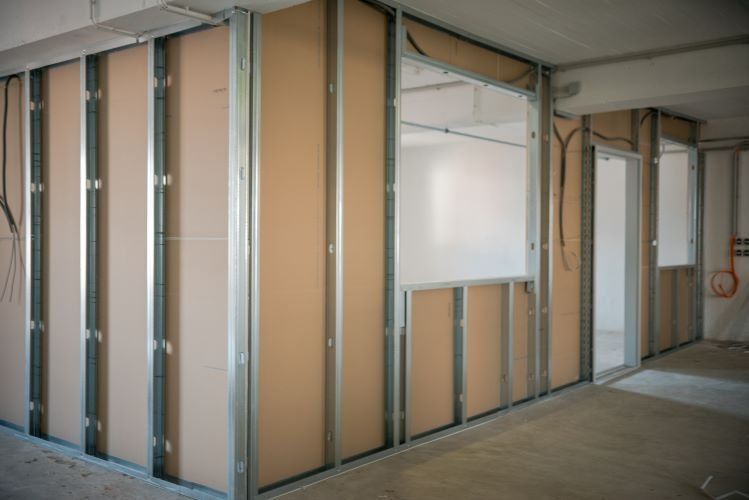
Drywall framing is the foundational step in creating sturdy and durable walls and ceilings. As experts in drywall services, Chatham-Kent Drywallers is here to shed light on this essential aspect of construction. In this article, we'll explore how drywall framing is done and the materials needed to complete the job successfully. Understanding Drywall Framing: Drywall framing involves constructing the framework or skeleton of walls and ceilings to provide support for the drywall panels that will be installed later. This framework consists of vertical studs, horizontal plates, and other structural elements that form the skeleton of the wall or ceiling. How Drywall Framing Is Done: Planning and Layout: The first step in drywall framing is careful planning and layout. This involves determining the dimensions of the walls and ceilings, as well as the locations of doors, windows, and other openings. Precise measurements and accurate markings are crucial at this stage to ensure proper alignment and spacing of the framing components. Installing Vertical Studs: Vertical studs, typically made of wood or metal, are installed at regular intervals along the length of the wall. These studs provide vertical support and serve as attachment points for the drywall panels. They are secured to the floor and ceiling plates using nails, screws, or specialized framing hardware. Adding Horizontal Plates: Horizontal plates, also known as top and bottom plates, are installed at the top and bottom of the wall to provide lateral support and stability. These plates are typically attached to the vertical studs using nails or screws and help distribute the weight of the structure evenly. Framing Openings: Special attention is given to framing openings such as doors, windows, and archways. Additional framing components, such as headers and cripple studs, may be added to reinforce these areas and accommodate the installation of doors and windows. Bracing and Reinforcement: Bracing and reinforcement are essential to ensure the structural integrity of the framing system. Diagonal braces, blocking, and bridging are commonly used to strengthen the framework and prevent movement or shifting over time. Materials Needed for Drywall Framing: Studs: Vertical studs are typically made of wood or metal and are available in various dimensions, such as 2x4 or 2x6 inches. Metal studs offer durability and resistance to moisture, while wood studs are more affordable and easier to work with. Plates: Horizontal plates, also known as top and bottom plates, are typically made of the same material as the studs and provide lateral support for the framing system. Fasteners: Nails, screws, and specialized framing hardware are used to secure the framing components together. Galvanized or coated fasteners are recommended to prevent corrosion and ensure long-lasting stability. Bracing and Reinforcement: Diagonal braces, blocking, and bridging are used to strengthen the framing system and prevent sagging or bowing over time. In conclusion, drywall framing is a critical step in the construction process that lays the groundwork for the installation of drywall panels. By following proper techniques and using quality materials, Chatham-Kent Drywallers ensures that every framing project is completed with precision and reliability. If you're planning a drywall framing project in Chatham, Ontario, trust the experts at Chatham-Kent Drywallers to deliver exceptional results.
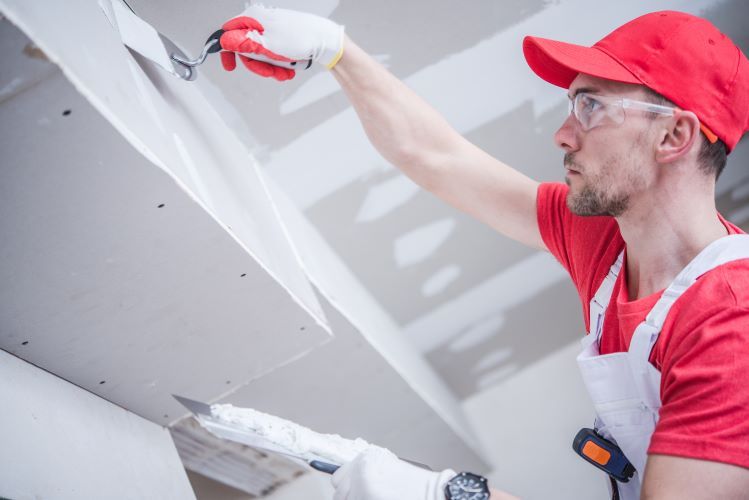
As a homeowner or contractor, navigating the intricacies of drywall finishing can be a daunting task. However, with the right techniques and expertise, achieving flawless results is within reach. At Chatham-Kent Drywallers, we pride ourselves on our mastery of drywall finishing, including the essential mudding and taping techniques. In this article, we'll delve into the intricacies of these techniques to provide you with a comprehensive understanding of drywall finishing . Understanding Drywall Finishing: Drywall finishing is the process of preparing drywall panels for painting or wallpapering by applying joint compound (also known as mud) and tape to cover seams, screws, and imperfections. This process ensures a smooth and seamless surface, ready for the final finishing touches. Mudding and Taping Techniques: Taping: Begin by applying joint tape over the seams between drywall panels. Joint tape reinforces the seams and prevents cracks from forming over time. Use a drywall knife to embed the tape into a thin layer of joint compound, ensuring full coverage and smooth adhesion. Smooth out any wrinkles or air bubbles in the tape, ensuring a tight seal against the drywall surface. Allow the tape to dry completely before proceeding to the mudding stage. Mudding: Start by applying a thin layer of joint compound over the taped seams, feathering the edges outward to blend with the surrounding drywall surface. Use a drywall knife to smooth and level the mud, removing any excess compound and ensuring a seamless transition between the taped seams and the drywall surface. Allow the first coat of mud to dry completely before applying subsequent coats. Depending on the size and complexity of the project, multiple coats of mud may be required to achieve the desired level of smoothness and finish. After each coat of mud has dried, sand the surface lightly to remove any imperfections or rough spots, ensuring a smooth and even finish. Repeat the mudding and sanding process as needed until the desired level of finish is achieved. Tips for Success: Use high-quality joint compound and tape to ensure strong adhesion and long-lasting results. Work methodically and carefully, paying close attention to detail and maintaining consistency throughout the mudding and taping process. Allow ample drying time between coats of mud to prevent cracking or shrinking. Use proper safety equipment, including dust masks and goggles, when sanding drywall to protect against airborne dust particles. Consider hiring a professional drywall contractor for large or complex projects to ensure professional-quality results and save time and effort. Conclusion: Mastering the mudding and taping techniques is essential for achieving professional-quality drywall finishes. With the expertise and dedication of Chatham-Kent Drywallers, you can trust that your drywall finishing project will be completed to the highest standards of quality and craftsmanship. Contact us today to learn more about our drywall services and schedule a consultation for your next project.
